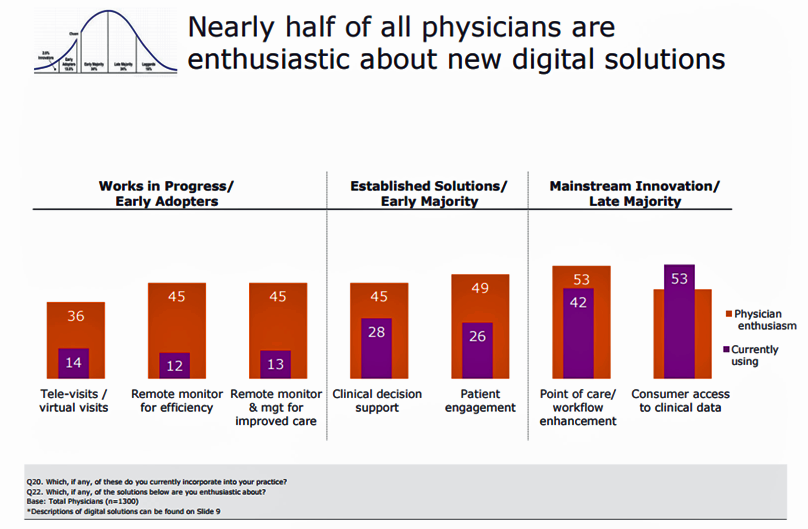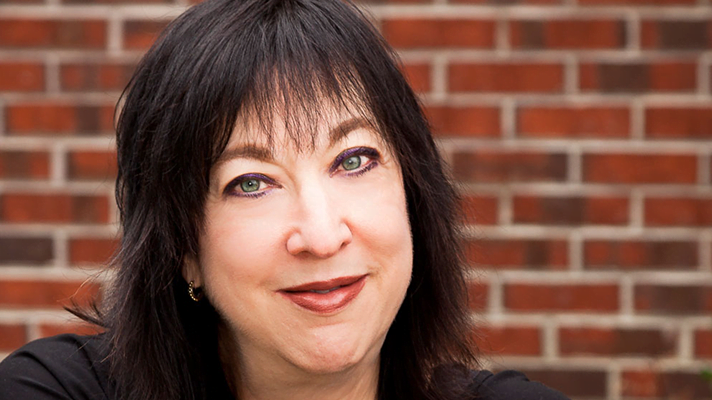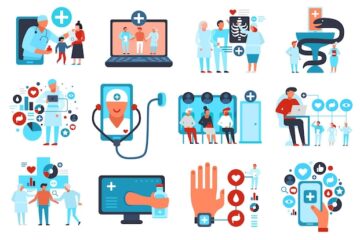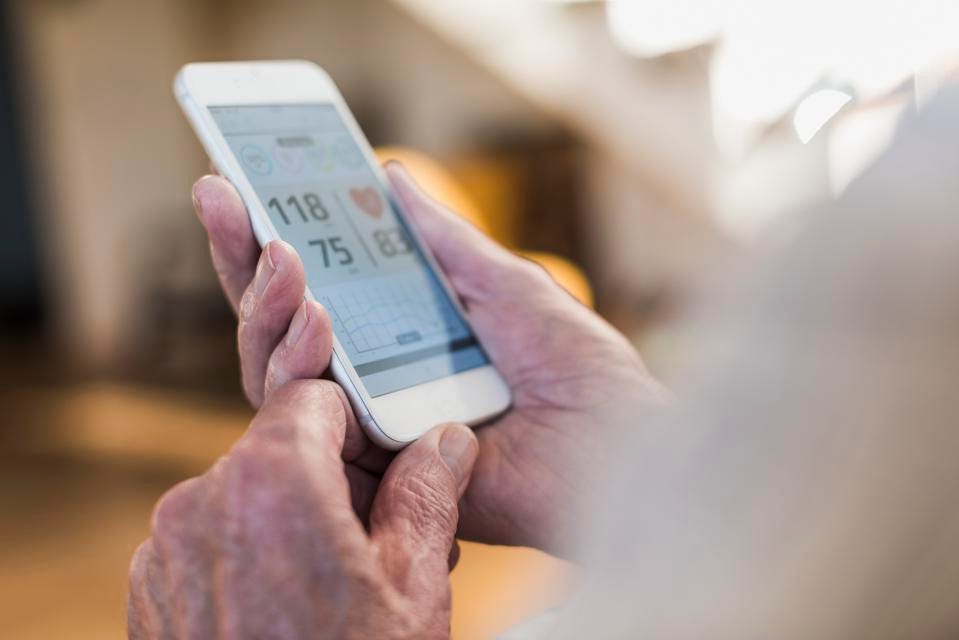

Notwithstanding the head of the AMA recently referring to digital health technologies as “snake oil,” it appears that one-half of physicians is keen on digital health. And scale, not age, matters when it comes to doctors using digital health tools.
The American Medical Association surveyed physicians on their use of digital health tools, finding that primary care physicians and doctors working in larger and more complex practices tend to be more digital.
In Physicians’ motivations and requirements for adopting digital clinical tools, the AMA’s digital health study, “Physicians are optimistic about digital health innovation and its game-changing potential to benefit medicine,” the press release summarizes.
Overall, 85 percent of physicians saw advantages for digital health solutions in caring for patients. Slightly more PCPs felt this way compared with specialists.
The positives of digital tools are their potential to improve practice efficiency, increase patient safety, improve diagnostic ability, reduce physician burnout, and improve the physician-patient relationship.
That patients demand digital health tools was the lowest-ranked reason attracting physicians to adopt them. But younger and female doctors look to digital health tools to help reduce burn-out, improve the physician-patient relationship, and improve adherence and convenience for patients.
Several factors must be resolved to fan doctors’ adoption of digital, including
- Coverage for liability/malpractice
- Data privacy and security assurance from the EHR vendor
- Integrating to the doctors’ electronic health records systems to streamline workflow, and
- Billing/reimbursement for time using the tools in practice.
In terms of specific digital technologies, over one-half of physicians are currently extending access to clinical data to consumers, and 42 percent using point-of-care workflow enhancements (which is the technology about which most physicians are most enthusiastic), illustrated in the chart. While 26 percent of physicians are using patient engagement and 28 percent clinical decision support, nearly 50 percent of doctors are enthusiastic about these applications. One in 10 doctors are early adopters of newer digital tech – televisits/virtual visits and remote monitoring. Nearly one-half of physicians are enthusiastic about remote monitoring, and one-third about telehealth.
The survey polled 1,300 practicing US physicians (equally split between primary care providers and specialists) between 28 and 65 years of age who provided a minimum of 20 hours of direct patient care per week. Physicians were surveyed in July 2016.
The AMA conducted this study to “connect the voice of the physician to new technologies being developed,” the Association notes in the report.
Health Populi’s Hot Points: “From ineffective electronic health records, to an explosion of direct-to-consumer digital health products, to apps of mixed quality – it’s the digital snake oil of the early 21st century,” said AMA CEO Dr. James Madara to the House of Delegates at the AMA Annual Meeting in June 2016. This study, released in September 2016, was published just a few months after Dr. Madara made that statement.
Dr. Madara was speaking to the lack of evidence base for many shiny new things in digital health, especially those going direct-to-consumer (patient) in the form of mobile health apps and applications that compromise physicians’ ability and workflows to diagnose, treat, and converse with patients. His concern, shared by physicians at large, is that so much technology in health care has made care less, not more, efficient, especially burdened by a lack of interoperability/connectivity.
Dr. Madara pointed to Dr. Robert Wachter’s book, The Digital Doctor, as a salvo to the snake oil challenge. Quoting from Dr. Wachter’s book, Dr. Madara shared: “Even when that wonderful day arrives when we have finally coaxed the machines into doing all the things we want them to do, and none of the things we don’t, we will still be left with one human being seeking help at a time of great need and overwhelming anxiety” — the patient.
[Source:-Health Care It news]




